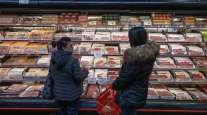Consumer Spending Rises in May, Income Growth Cools

Consumer purchases moderated last month after the biggest advance since August 2009, as American households realigned outlays with slower income growth.
Personal spending climbed 0.4% in May after a 1.1% jump a month earlier that was more than initially estimated, Commerce Department figures showed June 29 in Washington. Incomes climbed a less-than-forecast 0.2%.
Even with the smaller advance in spending, steady job growth and a nascent pickup in wages will probably bolster household purchases after a first-quarter slowdown. With rising global uncertainty expected to stymie business investment, a resilient consumer will needed to keep the U.S.’s growth prospects intact.
The report shows “an economy where the consumer is doing relatively well,” said Joseph LaVorgna, chief U.S. economist at Deutsche Bank Securities Inc. in New York, who correctly forecast the gain in spending. “The consumer will do OK because the household sector is in very good fundamental shape.”
The increase in May spending matched the Bloomberg News survey median. Projections ranged from gains of 0.2% to 0.5% after an initially reported 1% April increase.
Incomes were forecast to climb 0.3%. April’s income reading was revised up to a 0.5% gain from a previously reported 0.4% advance.
After adjusting for inflation, which generates the figures used to calculate gross domestic product, purchases rose 0.3% in May after a 0.8% increase in April that was also the biggest gain since August 2009.
Purchases of durable goods — those meant to last more than three years, such as automobiles — climbed 0.6% after adjusting for inflation following a 2.6% April advance. Spending on nondurable goods rose 0.5%, while outlays for services were up 0.1%.
The report showed the price index tied to consumer spending increased 0.2% in May. From a year earlier, the gauge was up 0.9%. This inflation measure is preferred by Federal Reserve policymakers and hasn’t met their target in four years.
Stripping out the volatile food and energy components, the price measure also rose 0.2% from the month before, and 1.6% in the 12 months through the end of May.
Disposable income, or money left over after taxes, increased 0.1% in May from the month prior after adjusting for inflation, the smallest gain since March 2015, the report showed. It was up 3.2% in the past year.
The saving rate eased to 5.3%, the lowest this year, from 5.4%.




